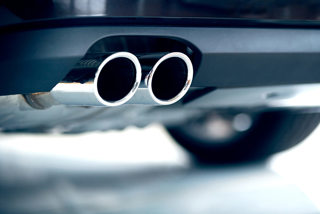Fleet managers should set the carbon thresholds on their fleet policies below 130g/km before new tax rules take effect in April to avoid a typical £10 per month rise in leasing rates on the average company car.
So says leasing and fleet management provider, Fleet Alliance, ahead of the new rules governing capital allowances that come into force from the beginning of April this year.
Since the new regulations were announced in last year’s Budget, Fleet Alliance has been advising its clients of the importance of re-setting the carbon ceiling within their fleet policies.
From April, the threshold for the main rate of capital allowances for business cars reduces from 160g/km to 130g/km, as does the limit to which the lease rental restriction applies.
For cars with emissions below 130g/km companies can still offset 100% of the lease rental against corporation tax, but for those over 130g/km the amount is restricted by 15% to 85%.
The 160g/km carbon dioxide emissions threshold was introduced for the first time in April 2009. Since then many companies have used it to set their maximum carbon threshold in order to maximise the tax benefits.
Martin Brown, managing director of Fleet Alliance, said: “The impact of the new rules will, we calculate, add around £10 per month to the lease rental for the average fleet car. But companies can avoid the impact of this rise if they introduce a new fleet policy with a sub 130g/km carbon ceiling ahead of the April deadline.
“On a fleet of say 250 cars, a £10 per month increase on a 36 month contract adds up to an additional £72,000, so it’s clear that there are genuine cost advantages in re-setting your carbon ceiling to sub 130g/km.”
Fleet Alliance’s advice to clients is based around the long-held belief, since confirmed by the 2012 Budget, that the Government is committed to using taxation to reduce carbon emissions.
Last March, Chancellor George Osborne announced that company car tax rates on all cars emitting more than 75g/km of carbon would increase by 1% in 2014–15, and by 2% in both 2015–16 and 2016–17, on top of a rise of 1% in 2012-13 – a total rise of 6% in four years.
These tax changes, along with the reduction in capital allowances, underline the importance of setting fleet policies that encourage take-up of low-emitting cars to capitalise on savings in tax, National Insurance and fuel costs.
Brown added: “The tax changes we will see over the next three to four years mean that companies and their drivers need to carefully consider the right combination of factors that best meet their needs. If in any doubt, consult your fleet management advisor.”





















james - 31/01/2013 11:52
People must learn to be more accurate on their comments - for vehicles which benefit from 100% WDA for sub 110mg cars this is only allowable if purchase. For leased assets this rule is no longer available. the resultant impact for a Prius (for example) is a rental increase in the region of £10 - £15 all other things being equal in the lease rental.